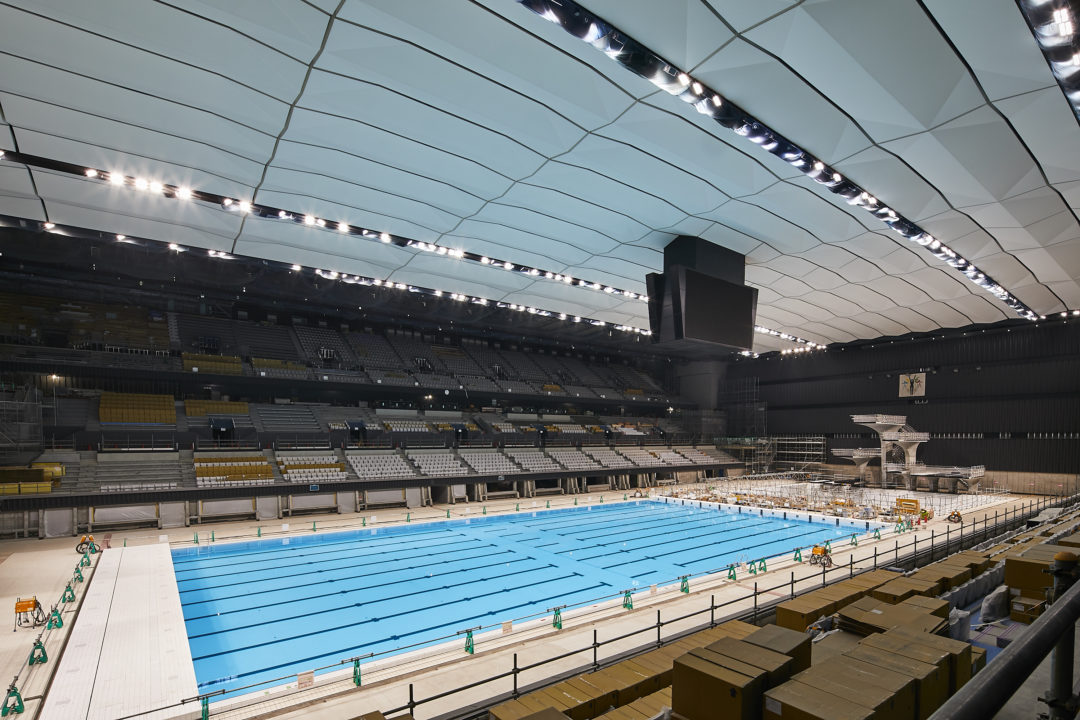As we reported earlier this week, International Olympic Committee (IOC) President Thomas Bach released a video statement providing an update on the status of the 2021 Olympic Games exactly six months out from the Opening Ceremonies.
“Everybody is really determined to make this Olympic Games, in six months from now, the light at the end of the tunnel in which, at this moment, we are all still in,” he said.
Although Bach did touch on the countermeasures the IOC is working to put in place in light of the COVID-19 pandemic, specifics were not laid out yet. A big pandemic-related constraint is a consideration of having a spectator-less Olympic Games, meaning there would be no fans physically present in Tokyo during competition.
Last week Tokyo 2020 organizing committee President Yoshiro Mori said a decision should be made in February or March whether the COVID-19 risks have fallen enough to let spectators attend.
Then today, he said, “We have been doing all kinds of simulations. Basically, I don’t think (the games without fans) is something that would happen or something that I would like to do, but it won’t be a simulation unless we think about it.” (Kyodo News)
The Japanese government is reportedly considering three options for a springtime decision — not imposing a limit on spectators, placing a ceiling of 50 percent of the venues’ capacity or holding events behind closed doors, according to the officials. (Kyodo News)
Aside from the unprecedented fact stadiums could potentially be silent with competitors having to imagine spectators cheering them on, the idea of not having spectators would deal a mega blow to the Japanese economy.
Katsuhiro Miyamoto, an honorary professor at Kansai University, produced a report estimating the economic loss which would incur if the Tokyo Olympics and Paralympics were to be held without spectators.
His estimates, which were released late last week, said holding the Tokyo Games behind closed doors would cause national economic damage of up to ¥2.4 trillion (nearly $23 billion USD).
This is due to the potential loss of spectator spending related directly to the Games, as well as stimulus effects on household consumption expenditures and corporate marketing activities. He estimates the economic gains from promotional sporting and cultural events after the Games would also be greatly reduced. (Japan Times)

Local sponsors start doing the moonwalk… https://www.nippon.com/en/news/reu20210129KBN29Y0QB/
Maybe they can get away with 25-30% capacity which would still be a loss albeit not as much. We have heard about reducing the amount of athletes and elimination some events which at this point would be unfair as athletes are in the final
Stretch
Who has to surrender their seats?
The Olympics should go ahead, they will undoubtedly charge triple for TV rights, No crowds seems the only way to go.
It’s crowded every day in Tokyo.
They should have the Olympics in Bloomington, Indiana and use the Indiana University facilities. With GOAT Coach, Ray Looze, overseeing everything, it would be the best Olympics ever!
thats geh
Getting old
That is an awesome idea open water events could be held in Lake Monroe and with its proximity to the great city of Indianapolis they could host together
Meh
The ISL was a relative success without spectators
All the swimmers that I know still haven’t gotten paid
I’ll consider it a success once I get paid in full
That totally sucks, hope they pay you. And soon
The swimmers I’ve spoken to were paid some amount, but not in full, and certainly not on the “every month payment” plan promised.
Keeping in mind that those same swimmers have told us that season 1 prize money wasn’t paid until June.
Blake?
Blake used his name when he commented.
Not American
What is the economic impact if they cancel it? Just curious.
Around 11 billion?
That’s a lot of moula
Enough with the “light at the end of the tunnel” savior syndrome nonsense…people are not that narrow minded nor do they have tunnel vision.
80% of the local people do not share the Olympic vision…get over it…and be honest and speak openly about who’s few voices that are the only ones that really drive this narrow desire forward.
If any, 2032 is the best solution…although far from perfect.
12 years to flatten the curve!
Only if we triple mask!
24 vaccine jabs 6 months apart!